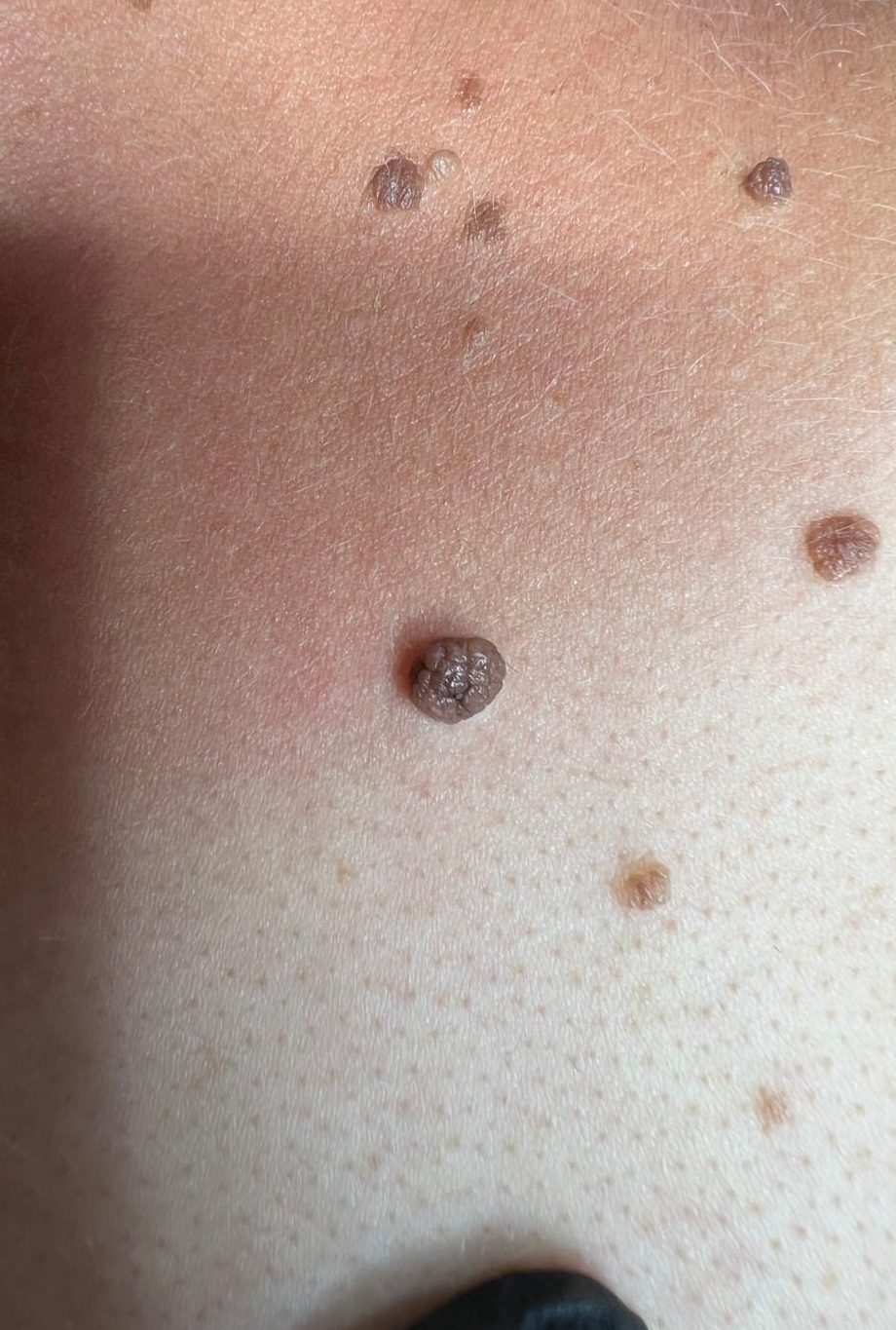Mole reduction is extremely popular in my clinics. It’s a non-invasive method of flattening moles, which reduces both their appearance and the potential irritation they can cause.
My most recent mole reduction was for a gentleman in his 20s who has an active job. He found the mole on the back of his neck irritating, as it often caught on the tag of his T-shirt. After following advice and visiting his GP, the mole was confirmed to be benign and, therefore, suitable for treatment.
There are, of course, other ways to treat moles, such as shaving or cutting them out. However, I find diathermy to be a far less invasive and highly effective method for treating benign moles.
Following a thorough consultation to ensure the client fully understood the procedure, we proceeded with the treatment. During our discussions, I made it clear that the goal is to flatten the mole, though it may still be slightly raised, and a follow-up treatment might be necessary. For pigmented moles, it’s important to note that treatment will not eliminate the pigment—we’re focusing solely on flattening the mole.
I always advise my clients that hyperpigmentation or hypopigmentation can sometimes occur after treatment. This means that once the area heals, the skin may appear slightly lighter or darker where the mole was, leaving a subtle mark. However, most clients prefer this to the presence of the mole itself. It’s essential to have all the information to make an informed decision.
Below, you can see the before and immediately after treatment images. The mole darkens and shrivels as it dries out during the diathermy process. The redness is a completely normal reaction as the skin is worked on. Over the next two weeks, I expect the area to darken and harden before naturally sloughing away to reveal a flattened surface. I will review the results in six weeks. If needed, a follow-up treatment will be performed, provided the skin is ready.


To book your blemish consultation now in either my Colchester or Chelmsford clinic click here.

